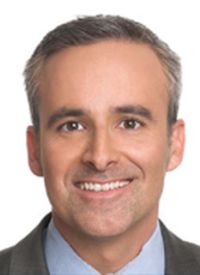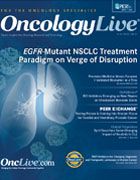Next-Generation Sequencing Company Sets Sights on $100 Genome Analysis
The NovaSeq 5000 and the NovaSeq 6000, from Illumina, are series sequencers designed to conduct large-scale genomics projects with greater sample volumes, which lowers the per-sample costs for most applications.
John Leite, PhD

John Leite, PhD
Illumina, which is based in San Diego, California, said its new NovaSeq series sequencers are designed so that researchers can conduct large-scale genomics projects with greater sample volumes, thus lowering the per-sample costs for most applications. The machines, the NovaSeq 5000 and the NovaSeq 6000, are priced at $850,000 and $950,000, respectively, Illumina said.1 The company plans to begin shipping the NovaSeq 6000 in March and the NovaSeq 5000 by midyear.
Although such sequencers are currently used for research purposes only, a lower per-sample price point could broaden the applications for the technology, Illumina officials said. “We imagine that what we’re going to be driving in the future, and where there’s the most pent-up demand, is in democratizing whole-genome sequencing, because as we expand the capacity of these instruments and improve the output, the cost per sample tends to drop significantly,” said John Leite, PhD, vice president of oncology, market development, and product marketing for Illumina’s Oncology Business Unit, in an interview with OncologyLive.®
“We found that translational researchers are doing clinical research applications, but what we’re expecting to see coming from these instruments is the next generations of screening applications, diagnostic applications, and therapy assignment applications,” Leite added.
Chart. DNA Sequencing Cost per Genome2
The National Human Genome Research Institute reported a sharp drop in the cost of genome sequencing in 2008 with the introduction of next-generation technologies, outpacing increases in computing speeds expected under Moore’s Law.
The price of whole-genome sequencing has dropped precipitously since next-generation technology was introduced approximately 10 years ago, according to the National Human Genome Research Institute, which estimates sequencing costs at its centers at about $1000 per genome (Chart).2 Companies began introducing sequencing for doctor-ordered tests at that price point last year.3Illumina, with nearly $2.4 billion in revenue in 2016 (an 8% increase over the prior year)4, has been among the leading global providers of sequencing technology and services, and analysts expect its products to affect the entire market.5,6 The Illumina MiSeqDx was the first gene analysis system to gain FDA approval in 2013.7
The NovaSeq platform can sequence from 3 to 48 whole human genomes per run, more quickly than previous Illumina assays. It has applications for analyzing germline base mutations, identifying spontaneous mutations that occur from environmental factors, and performing chemical modifications to the DNA material, among many other things. Additionally, there are applications in liquid biopsy.
The new platforms are similar to previous Illumina models in that they use what Leite calls “sequencing by synthesis,” where the DNA in the sample is copied and reproduced 1 nucleotide at a time. Each nucleotide transmits a signal that is read by the machine’s high-resolution cameras, giving a complete read of the sample’s architecture, metafluidics, chemistry, and informatics.
The cost of running a full genomic sequence is not the only roadblock for wider clinical adoption. Leite said physicians need more clinical evidence about what to do with the information from a genomic sequence. He also said the medical field needs a structure that can “efficiently and adequately reimburse the test, and educate the payers about the value of next-generation sequencing.” Illumina is planning to work with regulatory agencies in the United States and in other countries to gain approvals for sequencing assays in a clinical setting.
“We’ve already made significant strides in that direction. We have 1 instrument that’s already cleared through the FDA, we have another that is about to be cleared at the end of this year, and we have a number of assays that we are in the process of getting cleared,” Leite said.
References
- Illumina introduces the NovaSeq series—a new architecture designed to usher in the $100 genome [news release]. San Diego, CA: Illumina, Inc; January 9, 2017. www.illumina.com/company/news-center/press-releases/ press-release-details.html?newsid=2236383. Accessed March 9, 2017.
- Wetterstrand KA. DNA sequencing costs: data from the NHGRI Genome Sequencing Program (GSP). www.genome.gov/sequencing-costsdata. Updated May 24, 2016. Accessed March 9, 2017.
- Ray T. With $999 whole-genome sequencing service, Veritas embarks on goal to democratize DNA information. GenomeWeb. www.genomeweb.com/sequencing-technology/999-whole-genome-sequencing-service-veritas-embarks-goal-democratize-dna. Published March 6, 2016. Accessed March 9, 2017.
- Illumina reports full financial results for fourth quarter and fiscal year 2016 [news release]. San Diego, CA: Illumina, Inc; January 31, 2017. www.illumina.com/company/news-center/press-releases/press-release-details.html?newsid=2241060. Accessed March 9, 2017.
- Erickson S. 3 top growth stocks for 2017. The Motley Fool. www. fool.com/inves ng/2017/01/05/3-growth-stocks-for-2017.aspx. Published January 5, 2017. Accessed March 9, 2017.
- Suma J, Sivakumar G. Next generation sequencing-current status. J Next Generation Sequencing & Applications. 2016;3:e107. doi: 0.4172/2469-9853.3-e107.
- FDA allows marketing of four “next generation” gene sequencing devices [news release]. Silver Spring, MD: US Food and Drug Administration; November 19, 2013. www.fda.gov/newsevents/newsroom/pressannouncements/ucm375742.htm. Accessed March 9, 2017.




